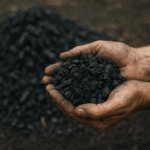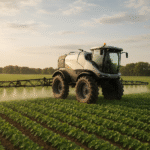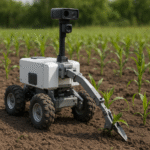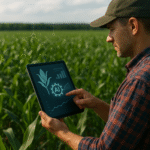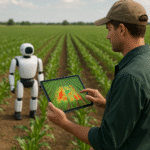Farmers and researchers alike are rediscovering an age-old practice that promises to reshape the future of agriculture. By transforming organic waste into a stable form of carbon, this technique not only enriches soil but also tackles pressing environmental challenges. From ancient Amazonian landscapes to high-tech laboratories, the resurgence of biochar underscores its multifaceted potential.
Historical Roots of Biochar Use
Long before industrial fertilizers and chemical amendments, indigenous communities in the Amazon basin harnessed the power of biomass to create fertile plots known as terra preta. These dark, nutrient-laden soils formed when charcoal fragments mixed with organic residues, pottery shards, and compost, giving rise to unparalleled levels of soil fertility. Archaeological evidence suggests that these anthropogenic soils remained productive for centuries, breeding abundant harvests where surrounding terrain proved infertile.
Early practitioners of this technology understood that charcoal fragments possessed remarkable stability, resisting decomposition and locking away carbon for extended periods. This ancient wisdom laid the groundwork for modern interpretations of biochar production, offering insights into sustainable land management long before contemporary concerns about climate change and carbon footprints emerged.
Modern Innovations and Applications
Advances in Pyrolysis Technology
Today’s biochar facilities use controlled pyrolysis reactors to heat organic feedstocks—such as wood chips, agricultural residues, and manure—in an oxygen-deprived environment. This process yields three main products:
- Biochar: a stable, carbon-rich solid
- Bio-oil: a liquid fuel precursor
- Synthetic gas (syngas): a source of renewable energy
Integrated systems capture syngas to power the reactor itself or generate electricity, fostering a circular economy model. Researchers continually refine reactor designs to maximize biochar yield, optimize energy recovery, and reduce emissions.
Soil Amendment and Crop Performance
Incorporating biochar into fields has demonstrated significant gains in crop yield, particularly in degraded or sandy soils. Its porous matrix enhances nutrient retention, reducing leaching of vital elements like nitrogen and phosphorus. Furthermore, biochar serves as a refuge for beneficial soil microorganisms, improving root colonization by mycorrhizal fungi and bacteria that fix atmospheric nitrogen.
Field trials across diverse climates—from sub-Saharan Africa to the American Midwest—report increases of 10–30% in grain volume. These improvements arise from better water-holding capacity, attenuated soil acidity, and slow-release nutrient dynamics. By tailoring biochar amendments to specific soil textures and crop species, farmers unlock a new dimension of agronomic resilience.
Environmental and Economic Benefits
The allure of biochar extends far beyond on-farm productivity. When biochar is sequestered in soils, it acts as a long-term carbon sequestration mechanism, converting atmospheric CO₂ into a stable form buried underground. Estimates suggest that global deployment of biochar could offset up to 12% of annual greenhouse gas emissions.
Other environmental advantages include:
- Reduction in nitrous oxide and methane emissions from soils
- Enhanced remediation of heavy metals and organic pollutants
- Improved water quality due to decreased nutrient runoff
From an economic standpoint, co-producing bio-oil and syngas generates revenue streams that improve farm profitability. Carbon credit markets are beginning to recognize biochar’s value, enabling producers to monetize verifiable carbon removal. Innovative business models pair waste management contracts with biochar sales and carbon offsets, creating holistic solutions for agriculture, energy, and waste sectors.
Research Frontiers and Challenges
As enthusiasm grows, scientists probe unanswered questions about long-term biochar behavior, interaction with diverse soil types, and optimal application rates. Some emerging topics include:
- Characterizing biochar aging processes and their impact on soil chemistry
- Engineering designer biochars tailored for specific crop needs
- Evaluating life-cycle assessments to balance energy inputs and outputs
- Quantifying regional climate mitigation potentials
Despite its promise, large-scale adoption faces hurdles such as upfront investment costs, feedstock supply logistics, and regulatory uncertainties. Collaborative networks among farmers, startups, research institutions, and policymakers are essential to surmount these barriers and institutionalize biochar as a mainstream practice.
Global Case Studies
Several noteworthy initiatives demonstrate biochar’s real-world impact:
- Kenya’s Charcoal to Coffee: Smallholder growers integrate biochar into coffee farms, boosting yields and improving bean quality, while generating clean energy from pruned branches.
- European Biochar Certification: Standardized protocols ensure product quality, facilitating transparent carbon trading and end-user confidence.
- US Midwest Pilot Programs: State agencies fund demonstration farms to test biochar blends on corn and soybean rotations, measuring both agronomic and environmental metrics.
These diverse experiences underscore the adaptability of biochar across agroecological zones, cropping systems, and scales of operation.
Future Perspectives
The resurgence of biochar marks a pivotal convergence of ancient ingenuity and modern science. As farmers face mounting pressures from erratic weather, soil degradation, and climate uncertainty, biochar offers a proven pathway to bolster agricultural resilience while mitigating environmental harm. Ongoing efforts to integrate remote sensing, precision agriculture, and bioinformatics promise to refine application techniques, optimize resource use, and tailor solutions to local conditions.
By embedding biochar within broader sustainability frameworks—such as agroforestry, regenerative grazing, and organic cropping—stakeholders can unlock synergistic gains for food security, ecosystem health, and carbon neutrality. This ancient technology, reborn for the twenty-first century, stands poised to transform how humanity cultivates the land and safeguards the planet.
